|
Glass Cat
2 Ruth Claxton Oona Grimes James Ireland Sophie Lascelles Helen Maurer William Waterhouse Sarah Woodfine Tom Woolner |
|
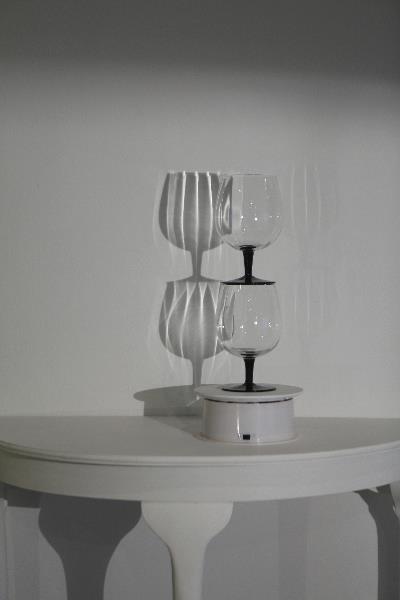 |
|
|
Helen Maurer
Glass Fountain II 2013 |
|
|
10 January - 4 February 2014 Wimbledon Space, Wimbledon College of Arts
In search of transparent things: allusion and illusion in glass cat - text by Peter Suchin
The Glass Cat – the strange animal from which the present exhibition takes its title – is a creature cognizant of everything in a world in which nothing is certain. [1] The Cat is the absent centre of a landscape laced with unease, a place in which all things are shadowed – the cat’s transparency notwithstanding – by doubt and contradiction. It is a potentially poisoned continent wherein, to borrow a phrase from Marcel Duchamp, a “Playful Physics” reigns. [2] The Glass Cat, as comprehending and mysterious as those in Huysmans, Baudelaire or Poe, haunts this looking-glass landscape, aware of all there is to know yet revealing or explaining nothing at all. The ostensibly stabilising couplet of Power and Control, of knowledge in the face of the uncertain and the uncanny, has faded out like Lewis Carroll’s Cheshire Cat. [3] And yet everything in this exhibition – the careful colouration of the walls, the tightly calibrated juxtaposition of individual works, and even one’s means of entrance and exit – propose, consciously and implicitly, the light but intelligently controlling touch of the creative curator’s hand. The Glass Cat may also signify an attitude of dissembling, of fakery, the sign of a thing rather than the thing itself, a copy operating at several removes from the original. Many of the pieces in this exhibition draw upon the line between reality and sign or trace. Oona Grimes’ thing-thing is paradigmatic in this respect. Looking like language or a sort of rebus with all the letters removed, Grimes’ drawings present us with a cipher which, having lost the key to its deduction, effectively asks the viewer-reader to be something of a Champollion or Sherlock Holmes. Yet the compact combinations of patterns and lines Grimes provides, although perched upon a scroll or book-like support, may operate more as aesthetic entities than neatly-decipherable signs. If they are indeed elements of a language as such then we have not yet discovered their place of origin. One is reminded of the enigmatic entity known as the “Voynich Manuscript” or of the complex cryptic deliberations of the important English occultist John Dee. [4] Such a shift from the thing itself to its coded or translated apparition can also be seen in Helen Maurer’s Glass Fountain II. Upon a moving turntable two drinking glasses slowly rotate, their sharp but shimmering shadow being thrown upon the wall via a powerful spotlight placed close to the stacked glasses. The solid glass becomes, in this rendition something akin to smoke, drifting clouds or indeed a fizzing fountain, the mechanism of the illusion being visible for all to see. The spin of the shadow is mildly hypnotic, as though designed as a trap for the too inquisitive spectator, though the fact that most of the work’s components are placed on a small hall or bedroom table reminds us that the illusion is actually disarmingly simple, arguably all the more powerful for its aspect of self-revelation. Sophie Lascelles’ In the Grasslands might be regarded as structurally akin to Maurer’s Glass Fountain II, insofar as each piece is comprised of units arranged so that some of them, when combined, generate another part of the work. Maurer’s glasses and spotlight produce shadows, whilst the large projector used by Lascelle gives us an image of a windmill located on a barren Mongolian plain. The image, deliberately thrown out onto a makeshift cardboard screen, reveals how nomadic people harness natural elements to recharge portable electronic equipment, suggesting a culture that is at one and the same time ancient and modern. Lascelle’s assemblage may itself be read as a paradoxical object, particularly as one imagines the windmill – a mere filmic representation – somehow feeding energy to the objects in the gallery, and especially to the projector upon which its own image depends. Shadows and projections generally militate towards the implication of the existence of other worlds positioned outside the normal scope and conventions of human perception. With his playfully seductive Bubble, William Waterhouse appears to be constructing his own concisely enclosed world, in a creative act that uses as its engine a neat systematic process. At the top of a tall metal stem a fist-sized bubble materialises and slowly mutates before being drawn back into the machine, its constituent chemicals being recycled so as to make a subsequent bubble, then another, in a potentially infinite production line of “natural” forms. The sphere’s iridescent surface acts (as do other artworks in Glass Cat) as a lens or filter through which to view the surrounding space, its spherical form connoting the wholeness of an entire planet waiting to be explored. The work points both to fragility and to resurgence or recuperation, a plural thematics which might, once again, be extended to the whole of the exhibition. A strong sense of “double-edgedness” – if one may employ so awkward a term – is also a characteristic of Sarah Woodfine’s contributions to the show. The axe-head in I would do anything for love is authentic, sharp and deadly dangerous, while the neatly detailed drawing running the entire length of the handle is, regardless of its aesthetic refinement, a “mere” representation. An emphatic shadow also plays its part. The chopping block against which the axe rests, although echoing the exact proportions of the one once in service at the Tower of London, is covered in Formica, an entirely unconvincing substitute for actual wood. This play between genuinely functioning objects and closely observed drawings or other types of illusionistic representation is also evident in Woodfine’s Recipe for a kiss of shame, an exceedingly complex work in spite of its deceptively simple form. Four container-like shapes accompanied by two boxes of chunky wood rest upon a broad, synthetically-coloured table that would be more at home in a design fair than an art gallery. The table’s supporting structural limb displays a drawing of a broomstick running along its entire length, and other drawings, of vegetal and animal forms, occupy the centre of each “container”. The witch’s broom, the apparent “black book” of concoctions and spells, and the pictured potions, or rather, the illustrated components of these, together reveal to the perceptive viewer that the sculpture is in effect a summary of the central elements involved in the legendary flight of witches. Woodfine’s work looks towards systems of behaviour and perception well beyond conventional attitudes and constraints, an alchemic menagerie or armoury of interpretative possibilities for the viewer to make of what they will. [5] In James Ireland’s Scenic View (Mountains) one is requested to read three small bodies of breeze-block dangling from a series of interpenetrating poles as the mountains of the work’s title. The dreary grey of this dull artificial material stands in stark contrast to the beautiful colour of the poles, their tones continuously shimmering so as to embed these “mountains” within a lively landscape luminescence. The target “scene”, normally the focus on one’s attention, is destabilised, with the framework of poles, an ostensibly trivial theatrical support, bearing as much significance as – or possibly even more than – that of the mountains themselves. Ireland has also contributed a work comprised of steel mesh and concrete into which is inserted a piece of quartz crystal, a possibly magic fragment of nature caught in a trashy man-made screen or trap. Ruth Claxton’s aptly titled Specular Spectacular, an installation piece in mixed materials, again operates as a viewing lens for the pieces adjacent to it, a frame within the frame that is the exhibition itself. The work’s steel, mirrored, and transparent surfaces convey an illusion of interpenetration, mutation or contiguity as regards the entire display but it is, of course, a work in its own right, a carefully composed, highly flexible structure, perhaps analogous to an artificial organism into which other elements of the environment are drawn, but also “drawn around” and given space to breathe. The same artist’s Nest Piece again both a coherent work in its own right and yet generously open, suggests indeterminate extension and its opposite, namely the entropic potential of highly ordered natural or cultural configurations to spiral wildly out of control. Although Tom Woolner is the last artist to be referred to in the present text, his work is the first piece one encounters upon entering Glass Cat; in fact one finds one cannot but pass through this makeshift portal if one wants to see the show at all. A bleak but cleverly worked façade greets the visitor, who must walk through its cartoon-dumb doorway to gain admission to the display. The illustrational rendition of woodgrain on the door’s surface, etched with industrial adhesive upon a styrofoam structure, serves to remind us that we are entering into transformed territory. Upon leaving, the same doorway must also be employed. Where exactly, then, is the inside or the outside of this cogently delineated space? Is one entering an exhibition or leaving one behind? Where is the “real” to be found – inside the gallery or beyond it, within our mundane but highly-ordered borders or in another place entirely, somewhere utterly other? But only the Glass Cat knows the answer to this trenchant configuration of questions and conceits.
End notes The phrase employed in the title, “Transparent Things”, is from Vladimir Nabokov’s novel of that name (1972). 1. The “Glass Cat” is a character to be found in the Oz books of L Frank Baum (1856-1919). 2. The expression “Playful Physics” can be found in Duchamp’s The Bride Stripped Bare by Her Bachelors, Even, also known as The Green Box (1934). See, for example, Richard Hamilton’s typographic version of the Box, published under Duchamp’s name as The Bride Stripped Bare by Her Bachelor’s, Even (Hansjorg Mayer, 1976). The volume is unpaginated but the phrase can be found in the section headed “The illuminating gas”. Duchamp also makes reference in the Green Box to the casting of shadows, one of the leitmotifs of the present exhibition. 3. I am referring to the cats found in Joris-Karl Huysmans’ Down There (Sphere, 1974), in Charles Baudelaire’s several poems on the theme (included in his Les Fleurs du Mal, Harvester, 1982), and Edgar Allan Poe’s story The Black Cat, included in his Selected Writings (Penguin, 1980). For Carroll’s vanishing cat see Lewis Carroll/Martin Gardner, The Annotated Alice (Penguin, 1965, pp. 112 and following). 4. The “Voynich Manuscript” is the name attached to an as yet still undeciphered book-length manuscript discovered in 1912 by Wilfrid Voynich “in an ancient castle in Southern Europe”, according to Voynich himself, as quoted in Gerry Kennedy and Rob Churchill, The Voynich Manuscript (Orion, 2004, p. 9). For an account of the work and significance of John Dee, see Richard Deacon, John Dee (Frederick Muller, 1968), or the numerous discussions of Dee to be found in the writings of the Warburg scholar Frances Yates. 5. The literature on witchcraft is extensive but some of the most explicatory (as opposed to fanciful) accounts of their behaviour and reputation include Keith Thomas’ Religion and the Decline of Magic (Penguin, 1973), and Carlo Ginzburg’s Ecstasies: Deciphering the Witches’ Sabbath (Hutchinson Radius, 1990). |
|
 |
|
| Installation view | |
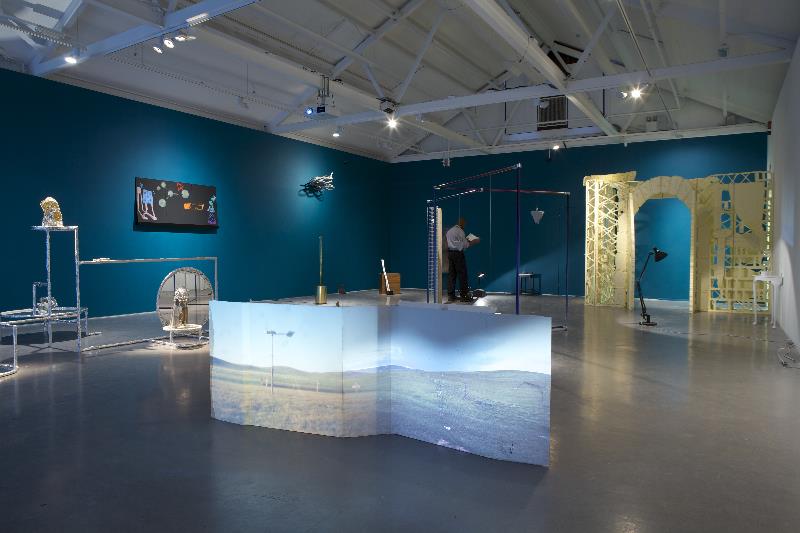 |
|
| Installation view | |
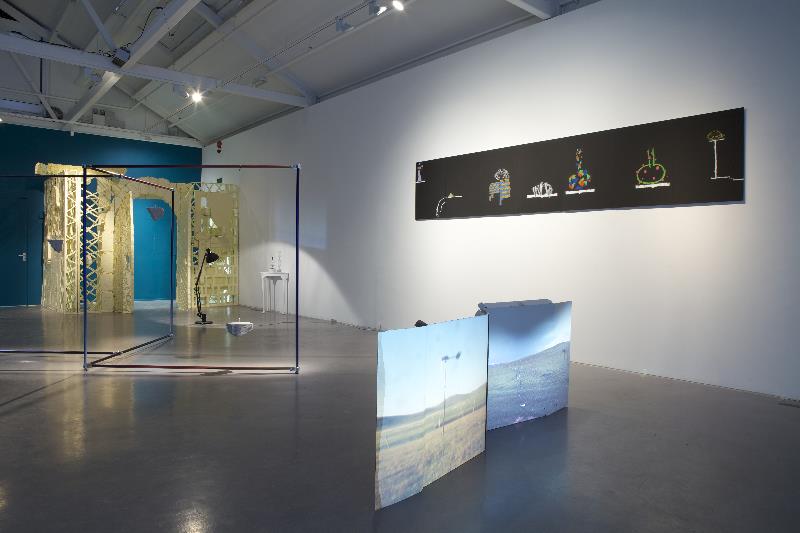 |
|
| Tom
Woolner Self Portrait as a Plank of Wood 2012
James Ireland Scenic View (Mountains) 2011 Oona Grimes thing-thing 2013 Sophie Lascelles In the grasslands 2013 |
|
 |
|
| Ruth Claxton Specular Spectacular 2013 Helen Maurer still 2014 | |
 |
|
| Ruth Claxton Specular Spectacular 2013 (detail) | |
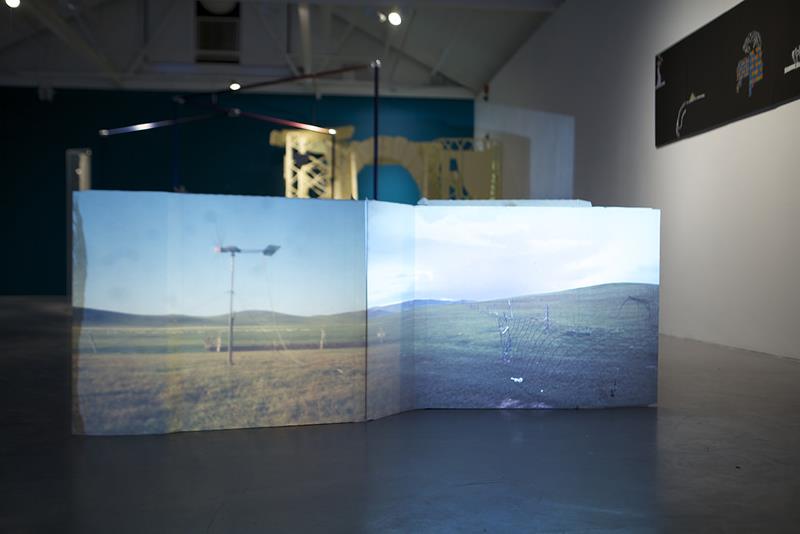 |
|
| Sophie Lascelles In the grasslands 2013 | |
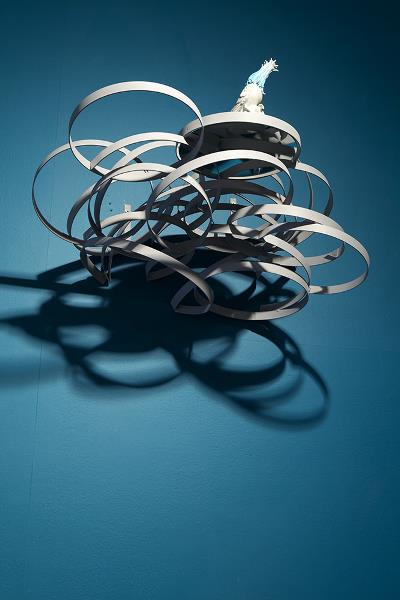 |
|
| Ruth Claxton Martinet (Land's End) 2009 | |
_2011.jpg) |
|
| James Ireland Scenic Views (Mountains) 2011 (detail) | |
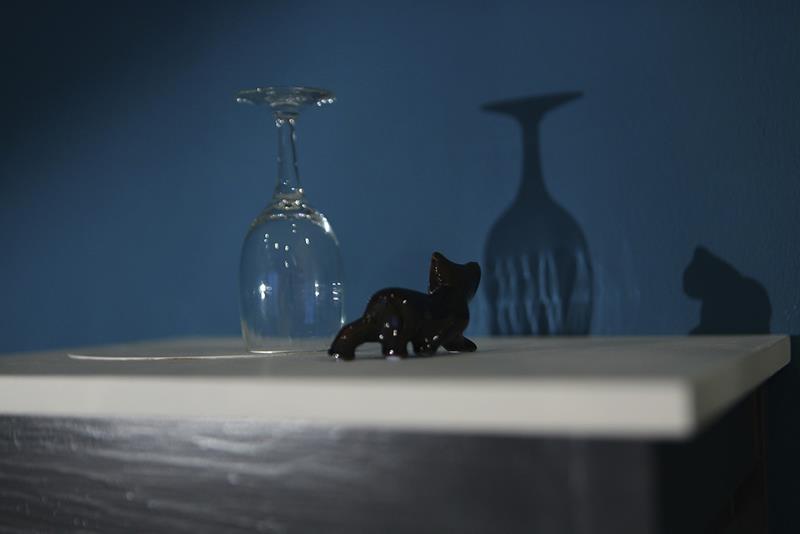 |
|
| Helen Maurer Prowler 2013 (detail) | |
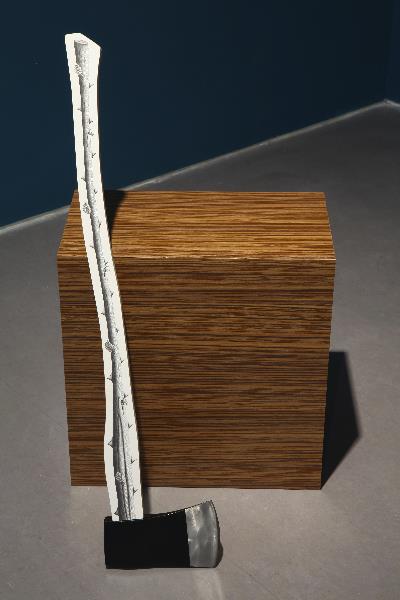 |
|
| Sarah Woodfine I would do anything for love 2013 | |
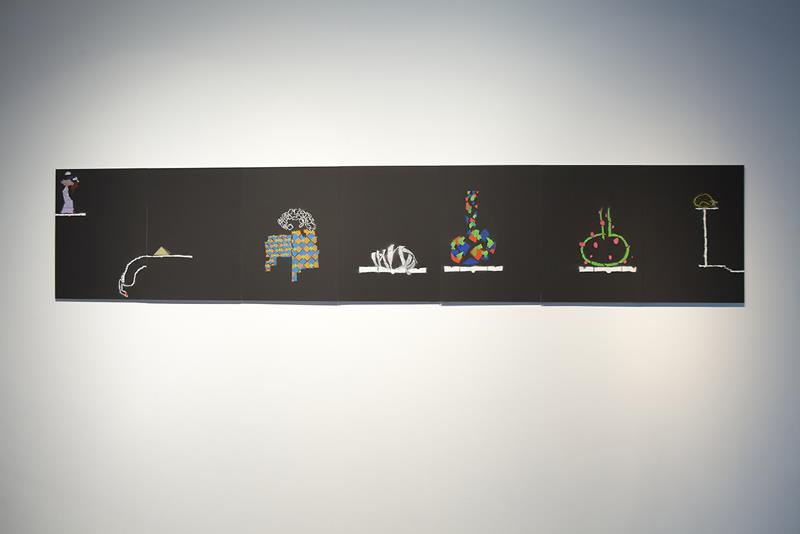 |
|
| Oona Grimes thing-thing 2013 | |
 |
|
| William Waterhouse Bubble 2013 | |
| >home | |